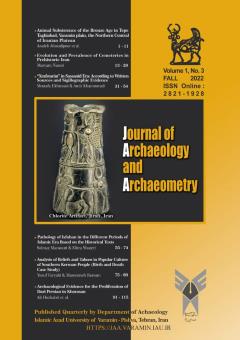Pathology of Isfahan in the Different Periods of Islamic Era Based on the Historical Texts
محورهای موضوعی : ArchaeologySolmaz Mansouri 1 , Mitra Shateri 2
1 - Archaeology Department, Faculty of Conservation and Preservation, Isfahan University of Art, Isfahan, Iran
2 - Archaeology Department, Humanity Sciences Faculty, Shahrekord Univesity, Shahrekord, Iran
کلید واژه: Islamic period, pathology, Natural injuries, Abnormal injuries,
چکیده مقاله :
Isfahan and its historical monuments have been repeatedly damaged and destroyed for a long time due to their unique strategic location. They are located on the highway from north to south and east to west of the central plateau of Iran. Factors that have played a role in damaging and destroying Isfahan›s historical monuments can be generally divided into two categories: natural elements and phenomena and human factors and behaviors. This study aimed to identify and categorize the causes of damage to the historical monuments of Isfahan from the beginning of the Islamic period to the Qajar period. To achieve this goal, two general questions arise: What are the main factors that have caused damage to the historical monuments of Isfahan during the Islamic era, and how can they be classified? Which harmful phenomena have caused Isfahan›s most severe destruction of historical monuments? To answer the questions, the destructive factors of Isfahan›s architectural works from the beginning of the Islamic period to the Qajar period have been studied. The research method is descriptive-analytical, and the data collection method is based on the study of historical-geographical sources, field observations, and existing works reports. The studies show that in addition to various factors, the most critical factors causing natural damage to historical monuments in Isfahan are drought, famine, earthquake, and the essential human characteristics; there have been internal or external wars and conflicts.


